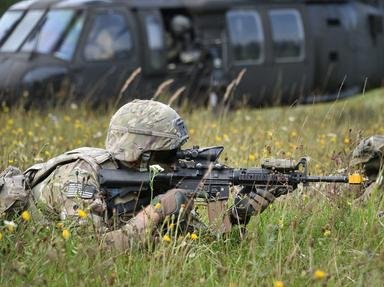Quiz Answer Key and Fun Facts
1. The most common and basic pattern for an army captain's insignia features three stars stacked vertically. Here is an example using slightly flowery stars; although given the country of origins you could also see them as little chocolates. Where is it from?
2. A variation of the basic design adds a stripe or border to the three basic stars. This design is from a rather young country that has only existed since 1992, but which one?
3. This insignia is a bit older - it dates from World War I - but the current one used in the country is still very similar, albeit less beautiful. Where would a mountain infantry captain have worn this?
4. Some countries certainly put more effort into their designs than others. You wouldn't typically expect a cold country known more for its lakes than its flora to use flowers in their design, but which one of them does?
5. Not every captain will have to be content with three stars - in one military tradition, he or she will get four of them. The four-star captain was, more or less, used throughout the entire Warsaw Pact, but where is the pictured original from?
6. On the other hand, if you had been a captain in a certain European country during World War II, you'd have had to be satisfied with only two stars and the prospect of being on the losing side. Where does this insignia hail from?
7. Enough stars now! This insignia may look like a navy commander, but you'd be hard pressed to find a navy in its country of origin. Which country uses these simple three stripes for their captain rank?
8. This design comes from what is probably one of the most difficult officer insignia systems to memorize. You will still probably have no problems identifying the country - which is it?
9. This design clearly says "air force" and you might mistake it for a United States non-commissioned rank, but it is indeed a captain. Which South American country decorates a "capitao" with this triple bar?
10. Vertical bars? That's a new one to me. Only one country I know of would have this slightly Aztec-inspired design on its shoulder boards - which one would that be?
Source: Author
WesleyCrusher
This quiz was reviewed by FunTrivia editor
stedman before going online.
Any errors found in FunTrivia content are routinely corrected through our feedback system.
